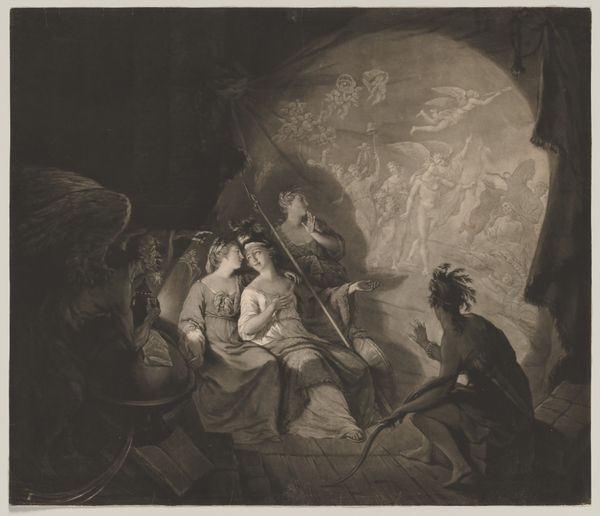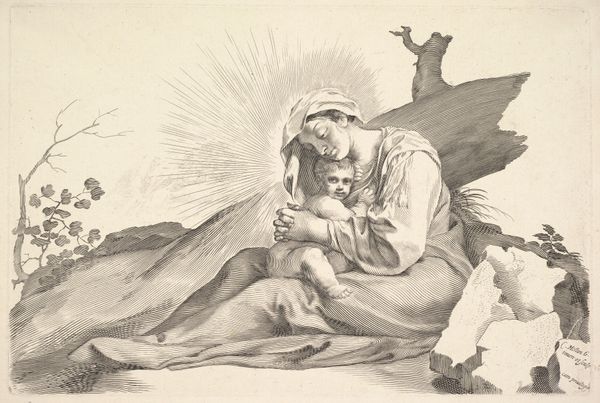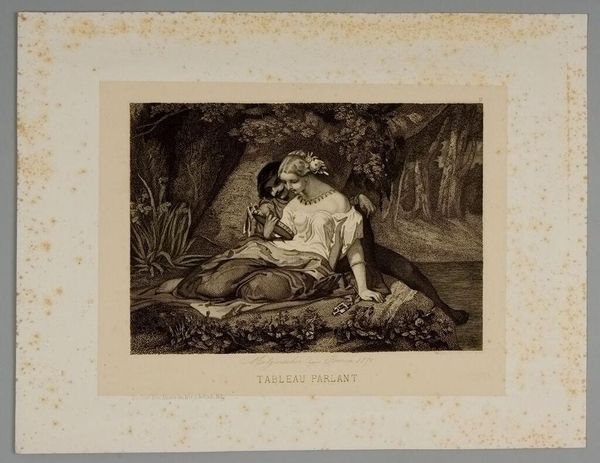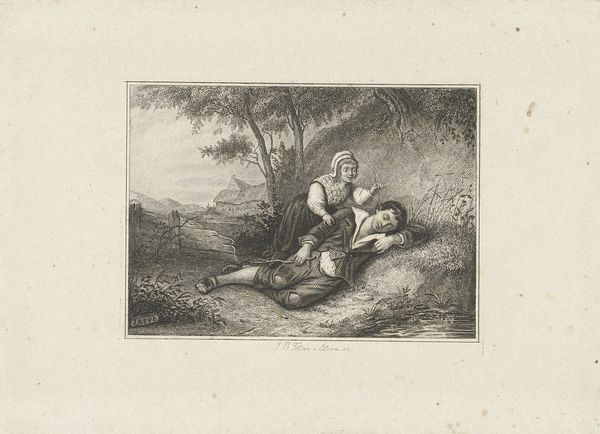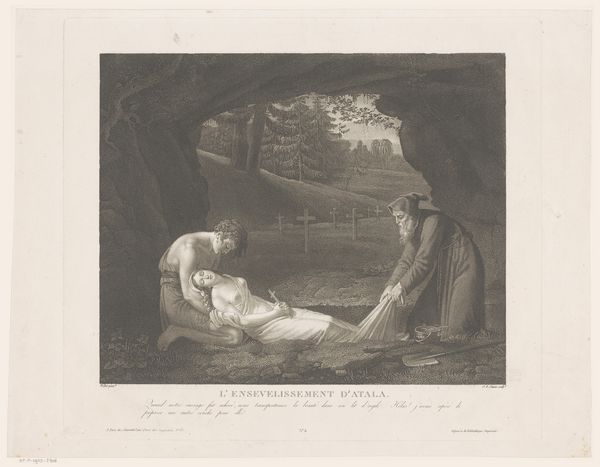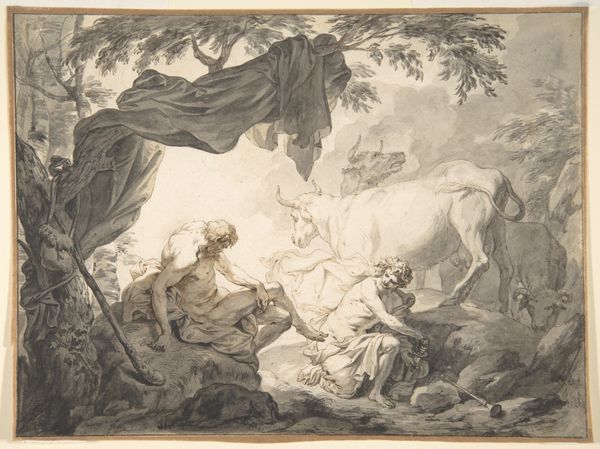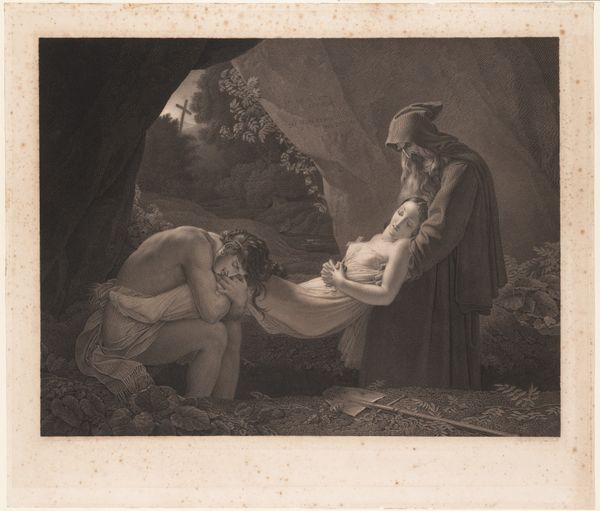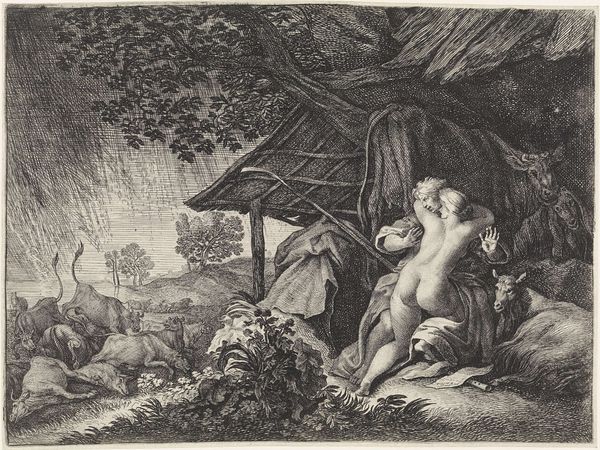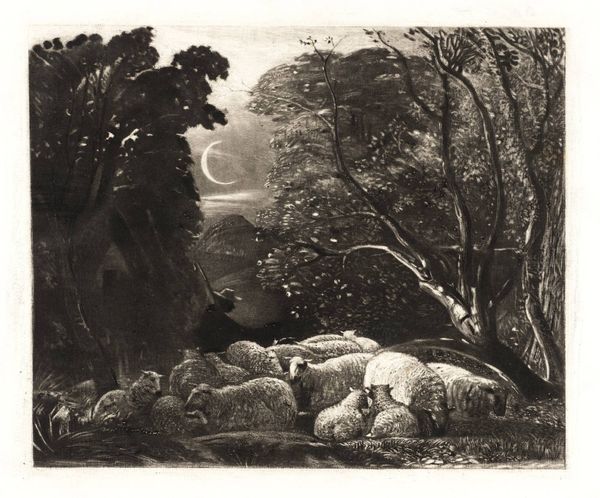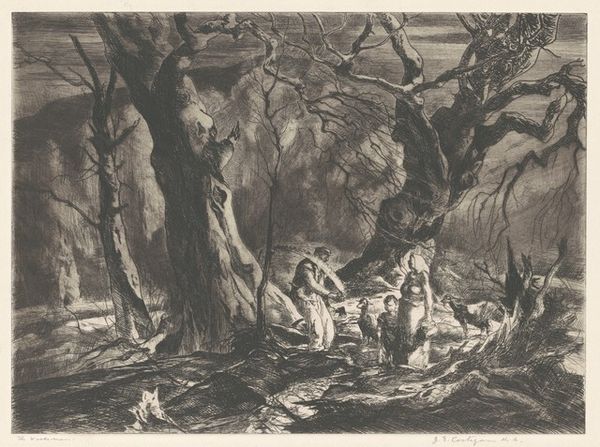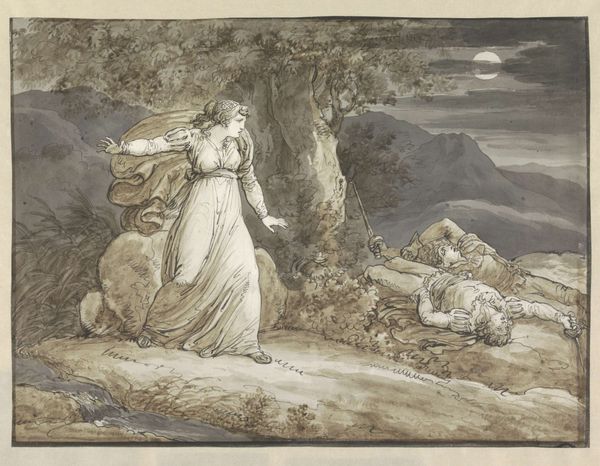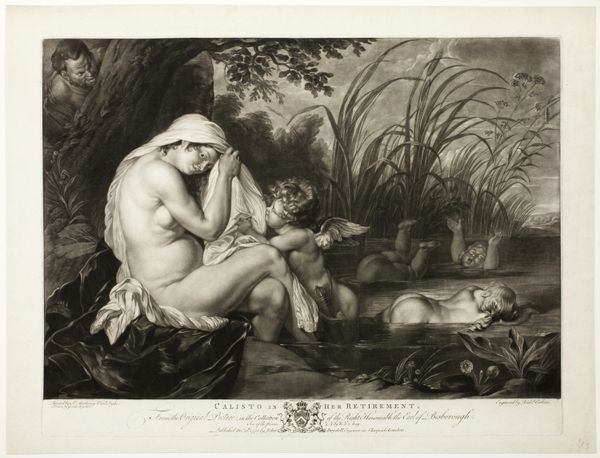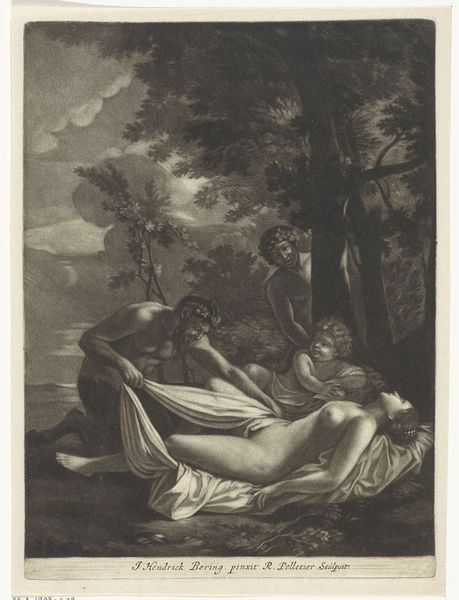
painting, oil-paint
#
figurative
#
narrative-art
#
fantasy art
#
painting
#
oil-paint
#
landscape
#
charcoal drawing
#
figuration
#
oil painting
#
romanticism
#
genre-painting
#
history-painting
Copyright: Public Domain: Artvee
Curator: The first thing that strikes me is the stark contrast between the warm, vibrant red of the soldier’s coat and the muted greens and browns of the surrounding landscape. It feels unsettling. Editor: Indeed. We are looking at “The Dead Soldier,” attributed to Joseph Wright of Derby. There’s no exact date associated with it. It’s rendered in oil paint, portraying a rather somber scene. Curator: The narrative here is so potent. Look at the drapery that creates a makeshift shelter. And a cannon barely visible in the background. This is clearly a scene born of conflict and scarcity. How does Wright utilize such meager materials, oil on canvas, to convey so much? Editor: Precisely! And note how Wright chooses to depict the aftermath, not the battle itself. This decision shifts the focus from the spectacle of war to its intimate consequences. Consider also how genre painting gained traction in British art circles at this time, aligning with wider discussions regarding national identity. The social fabric being torn apart becomes a fitting and very tragic symbol. Curator: The socio-political undertones can’t be missed. We see a mother, exposed, vulnerable, offering comfort and care, a stark contrast to the detached, stoic narratives often glorified within the historical canon. Were these canvases intended as direct social commentary and hung in specific exhibition spaces for the bourgeois to see? Editor: In terms of the consumption of the work, these kinds of history paintings, even if verging on genre scenes, were often circulated amongst the growing middle class as engravings or displayed within private collections that further fuelled artistic reputation and financial gains. Consider also Wright's interest in enlightenment ideals and scientific rationalism, often at odds with military conflicts. Curator: And I wonder if Derby's access to pigments during his time impacted his color choices; that red pops intensely compared to the muted earth tones. Or whether Wright's method involved a carefully applied sequence of paint layers. The fabric folds and his skin both contrast. Editor: Exactly! The interplay of public imagery, personal expression, and historical events shapes not only the narrative but the work’s trajectory as a potent visual statement. It underscores the ability of the art to influence and reflect collective consciousness. Curator: Examining it this way reveals something much more profound beyond the literal scene; Wright captured the grim realities behind conflict, emphasizing its toll. Editor: A worthwhile reminder. And quite moving too.
Comments
No comments
Be the first to comment and join the conversation on the ultimate creative platform.
